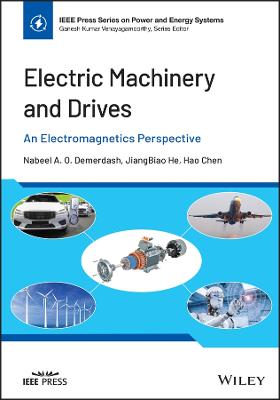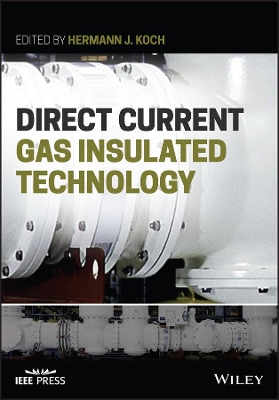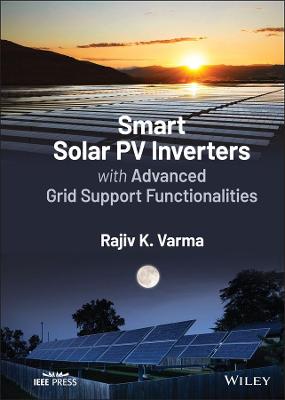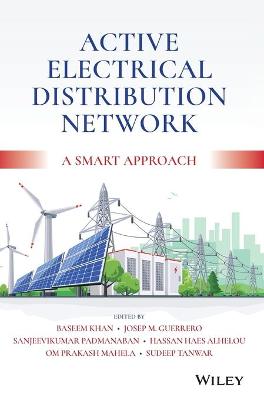Multiprobe Pressure Analysis and Interpretation
 -15%
portes grátis
-15%
portes grátis
Multiprobe Pressure Analysis and Interpretation
Lu, Tao; Chin, Wilson C.; Yang, Yuqing; Zhou, Minggao; Feng, Yongren
John Wiley & Sons Inc
08/2021
416
Dura
Inglês
9781119760658
15 a 20 dias
790
Descrição não disponível.
Preface xi
Acknowledgements xv
1 Formation Testing - Background, Perspectives and New Industry Requirements 1
1.1 Formation Testing - A Brief Introduction 1
1.2 Conventional Formation Testing Concepts 6
1.3 A New Triple Probe Tool - Design Concepts and Well Logging Advantages 7
1.3.1 Azimuthal flow signal strength (circumferential probes) 9
1.3.2 Axial signal strength (centerline oriented dual probes) 14
1.3.3 Hardware and software considerations simulation considerations 21
1.3.4 Closing remarks 24
1.4 References 24
2 Visual Tour in Formation Testing, Design and Manufacturing 25
2.1 Detailed Mechanical CAD Animation 26
2.2 From Drawing Board to Engineering Prototyping 35
2.3 Manufacturing Highlights and Production 39
2.4 Laboratory Facilities with Formation Testing Fixtures 40
2.5 Beijing Test Well and Logging Facilities 42
2.6 Tool Positioning in Beijing Test Well 44
2.7 Field Operations - Bohai Bay and Middle East 45
2.8 Closing Remarks 48
2.9 References 48
3 Triple Probe Formation Tester - from Idea to Design to Field Evaluation 49
3.1 Laboratory Highlights - Triple Probe Formation Tester 50
3.2 Triple Probe Close-ups in Field Test 53
3.3 Positioning the Tool in the Well 56
3.4 Example Pressure Testing Well Logs 59
3.5 References 61
4 Project Background - Analysis, Modeling and Interpretation 62
4.1 Well Logging Advantages 64
4.2 Math Model Perspectives 65
4.3 Related Formation Testing Literature 68
4.4 Background Schlumberger Results 71
4.5 Analysis of MDT Pressure Data 73
4.6 References 74
5 Dual Probe Analysis for Thamama Formation 76
5.1 Thamama Formation Problem Definition 76
5.2 FT-Multiprobe Simulation 78
5.3 FT-00 Forward Simulation 87
5.4 FT-01 Inverse Analysis 89
5.5 References 91
6 Dual Probe Application for Wara Formation 92
6.1 Wave Formation Data Description 92
6.2 FT-Multiprobe History Matching 93
6.3 FT-00 and FT-01 Analysis for Sink and Vertical Probe Data 100
6.4 References 103
7 Multiprobe Flow Modeling Strategies 104
7.1 Triple-probe Formation Testing Instrument 104
7.1.1 Background remarks 104
7.1.2 Multiprobe tool introduction 106
7.2 Dual and Triple-probe Steady Flow Modeling 112
7.2.1 Background - Sources, sinks, doublets and more 112
7.2.2 Modeling hierarchies 112
7.2.3 Exact steady flow pressure analysis 114
7.2.4 Exact streamline tracing and geometric analysis 117
7.2.5 Unbalanced doublet flows - a new approach 118
7.3 Transient Numerical Model 123
7.3.1 Simulator overview 123
7.3.2 Computational details 125
7.3.3 Flowline volume storage modeling 125
7.3.4 Active flowline volume coupling at observation probes 126
7.3.5 Mud filtrate invasion and supercharging, and underbalanced drilling 126
7.3.6 Periodicity conditions in flows from circular wells 127
7.4 References 130
8 Multiprobe Applications - Detailed Examples and Assessment 132
8.1 Drawdown for Round and Slot Nozzles With and Without Mud Filtrate Migration Through the Sandface 134
Example 1. Simple drawdown, round nozzle, no invasion 134
Example 2. Simple drawdown, round nozzle, invasion with supercharging, 200 psi overbalance 143
Example 3. Simple drawdown, round nozzle, invasion with strong supercharging, 2,000 psi overbalance 147
Example 4. Simple drawdown, round nozzle, underbalanced drilling, 100 psi underbalance 149
Example 5. Simple drawdown, slot nozzle, no invasion 151
Example 6. Simple drawdown, three pumping slot nozzles, no invasion 156
8.2 Highly Transient Applications, Drawdown and Buildup, Multiple Round or Slot Nozzles, No Invasion 160
Example 7. Simple drawdown and buildup, single round nozzle 160
Example 8. Three round nozzles executing drawdown and buildup simultaneously and independently, no invasion 165
Example 9. Two round nozzles, one withdrawing fluid, the second simultaneously injecting, no invasion 170
Example 10. Invasion or supercharge characterization in transient problems 174
8.3 Additional Topics 178
Example 11. A complicated simulation, effect of pore pressure in output displays 178
Example 12. Batch processing capabilities 183
Example 13. Spherical flow evaluation and geometric factors 191
viii Contents
Example 14. Pressure behavior at permeability extremes 194
Example 15. Comparing problems with and without supercharge 197
9 Special Topics - Gas Release, Convergence Acceleration, Big Data and Inverse Methods 200
9.1 Suppressing Dissolved Gas Release 201
Bubble point considerations 201
Example 1. Undesirable dissolved gas release 202
Example 2. Dissolved gas remains in solution 207
9.2 Steady Flow Convergence Acceleration for Interpretation Applications 212
Interpretation applications 213
Validating convergence accelerations 214
Big data inverse applications 219
9.3 Heterogeneity and Dip Detection Using Multiple Firings 219
9.4 Triple Probe Tools with Different Nozzle Geometries 225
9.5 Inverse Problems for Azimuthal and Axial Probe Applications 229
9.5.1 Azimuthal inverse problem 229
Steady flow forward calculations 231
Limited (kh,kv) range example 231
Inverse permeability predictions 241
Algorithm analysis 241
Wider (kh,kv) permeability example 247
Inverse method recapitulation 251
Data integrity in "big data" implementation 254
Azimuthal inverse strategies 256
9.5.2 Axial inverse problem for any dip angle 257
9.5.2.1 Dual probe anisotropy inverse analysis 257
Existing source model simulators 258
9.5.2.2 Supercharging - Effects of nonuniform initial pressure 267
Conventional zero supercharge model 268
Supercharge "Fast Forward" solver 269
9.5.2.3 Multiprobe "DOI," inverse and barrier analysis 275
9.6 Closing Remarks 282
9.7 References 283
Contents ix
10 Integrated Multiprobe Modeling System 284
Section 1 - General transient 3D simulator 286
10.1 Overall Capabilities and Enhancements 286
10.2 The "Steady" Check-box Option for Low and High Permeability Flows 291
10.3 Flows with Mixed Nozzle Designs and Different Pumping Schedules 294
Run 1. All round nozzles with staggered flow rates 294
Run 2. All slotted nozzles with staggered flow rates 296
Run 3. All slotted nozzles with identical flow rates 297
Run 4. Slot, round, slot combination with identical flow rates 300
Run 5. Round, slot, round combination with identical flow rates 301
10.4 Geometric Factor Role in Model and Tool Calibration 303
10.4.1 Model calibration 303
10.4.2 Tool and software calibration 306
10.5 Pad Nozzles with Different Orifice Sizes and Shapes 307
10.6 Pore Pressure Determination with Triple Probe Tool and Effects of Supercharge 309
Section 2 - Steady Simulator and Inverse Applications 312
10.7 Software Reference Overview 312
10.8 General Transient 3D Simulator in Batch Mode 315
10.9 Rapid Steady 3D Simulator in Batch Mode 319
10.10 Big Data Inverse Approach and Examples 333
10.10.1 Run 1. Center pumping probe, two observation probes with a first viscosity guess 333
10.10.2 Run 2. Center pumping probe, two observation probes with a second viscosity guess 348
10.10.3 Run 3. Three pumping probes in drawdown mode 350
10.10.4 Run 4. Two pumping probes in drawdown mode 359
10.11 Closing Remarks 361
Cumulative References 362
Index 377
About the Authors 387
Acknowledgements xv
1 Formation Testing - Background, Perspectives and New Industry Requirements 1
1.1 Formation Testing - A Brief Introduction 1
1.2 Conventional Formation Testing Concepts 6
1.3 A New Triple Probe Tool - Design Concepts and Well Logging Advantages 7
1.3.1 Azimuthal flow signal strength (circumferential probes) 9
1.3.2 Axial signal strength (centerline oriented dual probes) 14
1.3.3 Hardware and software considerations simulation considerations 21
1.3.4 Closing remarks 24
1.4 References 24
2 Visual Tour in Formation Testing, Design and Manufacturing 25
2.1 Detailed Mechanical CAD Animation 26
2.2 From Drawing Board to Engineering Prototyping 35
2.3 Manufacturing Highlights and Production 39
2.4 Laboratory Facilities with Formation Testing Fixtures 40
2.5 Beijing Test Well and Logging Facilities 42
2.6 Tool Positioning in Beijing Test Well 44
2.7 Field Operations - Bohai Bay and Middle East 45
2.8 Closing Remarks 48
2.9 References 48
3 Triple Probe Formation Tester - from Idea to Design to Field Evaluation 49
3.1 Laboratory Highlights - Triple Probe Formation Tester 50
3.2 Triple Probe Close-ups in Field Test 53
3.3 Positioning the Tool in the Well 56
3.4 Example Pressure Testing Well Logs 59
3.5 References 61
4 Project Background - Analysis, Modeling and Interpretation 62
4.1 Well Logging Advantages 64
4.2 Math Model Perspectives 65
4.3 Related Formation Testing Literature 68
4.4 Background Schlumberger Results 71
4.5 Analysis of MDT Pressure Data 73
4.6 References 74
5 Dual Probe Analysis for Thamama Formation 76
5.1 Thamama Formation Problem Definition 76
5.2 FT-Multiprobe Simulation 78
5.3 FT-00 Forward Simulation 87
5.4 FT-01 Inverse Analysis 89
5.5 References 91
6 Dual Probe Application for Wara Formation 92
6.1 Wave Formation Data Description 92
6.2 FT-Multiprobe History Matching 93
6.3 FT-00 and FT-01 Analysis for Sink and Vertical Probe Data 100
6.4 References 103
7 Multiprobe Flow Modeling Strategies 104
7.1 Triple-probe Formation Testing Instrument 104
7.1.1 Background remarks 104
7.1.2 Multiprobe tool introduction 106
7.2 Dual and Triple-probe Steady Flow Modeling 112
7.2.1 Background - Sources, sinks, doublets and more 112
7.2.2 Modeling hierarchies 112
7.2.3 Exact steady flow pressure analysis 114
7.2.4 Exact streamline tracing and geometric analysis 117
7.2.5 Unbalanced doublet flows - a new approach 118
7.3 Transient Numerical Model 123
7.3.1 Simulator overview 123
7.3.2 Computational details 125
7.3.3 Flowline volume storage modeling 125
7.3.4 Active flowline volume coupling at observation probes 126
7.3.5 Mud filtrate invasion and supercharging, and underbalanced drilling 126
7.3.6 Periodicity conditions in flows from circular wells 127
7.4 References 130
8 Multiprobe Applications - Detailed Examples and Assessment 132
8.1 Drawdown for Round and Slot Nozzles With and Without Mud Filtrate Migration Through the Sandface 134
Example 1. Simple drawdown, round nozzle, no invasion 134
Example 2. Simple drawdown, round nozzle, invasion with supercharging, 200 psi overbalance 143
Example 3. Simple drawdown, round nozzle, invasion with strong supercharging, 2,000 psi overbalance 147
Example 4. Simple drawdown, round nozzle, underbalanced drilling, 100 psi underbalance 149
Example 5. Simple drawdown, slot nozzle, no invasion 151
Example 6. Simple drawdown, three pumping slot nozzles, no invasion 156
8.2 Highly Transient Applications, Drawdown and Buildup, Multiple Round or Slot Nozzles, No Invasion 160
Example 7. Simple drawdown and buildup, single round nozzle 160
Example 8. Three round nozzles executing drawdown and buildup simultaneously and independently, no invasion 165
Example 9. Two round nozzles, one withdrawing fluid, the second simultaneously injecting, no invasion 170
Example 10. Invasion or supercharge characterization in transient problems 174
8.3 Additional Topics 178
Example 11. A complicated simulation, effect of pore pressure in output displays 178
Example 12. Batch processing capabilities 183
Example 13. Spherical flow evaluation and geometric factors 191
viii Contents
Example 14. Pressure behavior at permeability extremes 194
Example 15. Comparing problems with and without supercharge 197
9 Special Topics - Gas Release, Convergence Acceleration, Big Data and Inverse Methods 200
9.1 Suppressing Dissolved Gas Release 201
Bubble point considerations 201
Example 1. Undesirable dissolved gas release 202
Example 2. Dissolved gas remains in solution 207
9.2 Steady Flow Convergence Acceleration for Interpretation Applications 212
Interpretation applications 213
Validating convergence accelerations 214
Big data inverse applications 219
9.3 Heterogeneity and Dip Detection Using Multiple Firings 219
9.4 Triple Probe Tools with Different Nozzle Geometries 225
9.5 Inverse Problems for Azimuthal and Axial Probe Applications 229
9.5.1 Azimuthal inverse problem 229
Steady flow forward calculations 231
Limited (kh,kv) range example 231
Inverse permeability predictions 241
Algorithm analysis 241
Wider (kh,kv) permeability example 247
Inverse method recapitulation 251
Data integrity in "big data" implementation 254
Azimuthal inverse strategies 256
9.5.2 Axial inverse problem for any dip angle 257
9.5.2.1 Dual probe anisotropy inverse analysis 257
Existing source model simulators 258
9.5.2.2 Supercharging - Effects of nonuniform initial pressure 267
Conventional zero supercharge model 268
Supercharge "Fast Forward" solver 269
9.5.2.3 Multiprobe "DOI," inverse and barrier analysis 275
9.6 Closing Remarks 282
9.7 References 283
Contents ix
10 Integrated Multiprobe Modeling System 284
Section 1 - General transient 3D simulator 286
10.1 Overall Capabilities and Enhancements 286
10.2 The "Steady" Check-box Option for Low and High Permeability Flows 291
10.3 Flows with Mixed Nozzle Designs and Different Pumping Schedules 294
Run 1. All round nozzles with staggered flow rates 294
Run 2. All slotted nozzles with staggered flow rates 296
Run 3. All slotted nozzles with identical flow rates 297
Run 4. Slot, round, slot combination with identical flow rates 300
Run 5. Round, slot, round combination with identical flow rates 301
10.4 Geometric Factor Role in Model and Tool Calibration 303
10.4.1 Model calibration 303
10.4.2 Tool and software calibration 306
10.5 Pad Nozzles with Different Orifice Sizes and Shapes 307
10.6 Pore Pressure Determination with Triple Probe Tool and Effects of Supercharge 309
Section 2 - Steady Simulator and Inverse Applications 312
10.7 Software Reference Overview 312
10.8 General Transient 3D Simulator in Batch Mode 315
10.9 Rapid Steady 3D Simulator in Batch Mode 319
10.10 Big Data Inverse Approach and Examples 333
10.10.1 Run 1. Center pumping probe, two observation probes with a first viscosity guess 333
10.10.2 Run 2. Center pumping probe, two observation probes with a second viscosity guess 348
10.10.3 Run 3. Three pumping probes in drawdown mode 350
10.10.4 Run 4. Two pumping probes in drawdown mode 359
10.11 Closing Remarks 361
Cumulative References 362
Index 377
About the Authors 387
Este título pertence ao(s) assunto(s) indicados(s). Para ver outros títulos clique no assunto desejado.
Anisotropy; Formation rate analysis; Formation testing; FRA; GeoTap; Horizontal probe; Inverse problem; MDT; Observation probe; ORA formation tester; Permeability prediction; Pressure transient analysis; RDT; Reservoir description tool; Reservoir simulation; Saturn formation tester; Supercharge
Preface xi
Acknowledgements xv
1 Formation Testing - Background, Perspectives and New Industry Requirements 1
1.1 Formation Testing - A Brief Introduction 1
1.2 Conventional Formation Testing Concepts 6
1.3 A New Triple Probe Tool - Design Concepts and Well Logging Advantages 7
1.3.1 Azimuthal flow signal strength (circumferential probes) 9
1.3.2 Axial signal strength (centerline oriented dual probes) 14
1.3.3 Hardware and software considerations simulation considerations 21
1.3.4 Closing remarks 24
1.4 References 24
2 Visual Tour in Formation Testing, Design and Manufacturing 25
2.1 Detailed Mechanical CAD Animation 26
2.2 From Drawing Board to Engineering Prototyping 35
2.3 Manufacturing Highlights and Production 39
2.4 Laboratory Facilities with Formation Testing Fixtures 40
2.5 Beijing Test Well and Logging Facilities 42
2.6 Tool Positioning in Beijing Test Well 44
2.7 Field Operations - Bohai Bay and Middle East 45
2.8 Closing Remarks 48
2.9 References 48
3 Triple Probe Formation Tester - from Idea to Design to Field Evaluation 49
3.1 Laboratory Highlights - Triple Probe Formation Tester 50
3.2 Triple Probe Close-ups in Field Test 53
3.3 Positioning the Tool in the Well 56
3.4 Example Pressure Testing Well Logs 59
3.5 References 61
4 Project Background - Analysis, Modeling and Interpretation 62
4.1 Well Logging Advantages 64
4.2 Math Model Perspectives 65
4.3 Related Formation Testing Literature 68
4.4 Background Schlumberger Results 71
4.5 Analysis of MDT Pressure Data 73
4.6 References 74
5 Dual Probe Analysis for Thamama Formation 76
5.1 Thamama Formation Problem Definition 76
5.2 FT-Multiprobe Simulation 78
5.3 FT-00 Forward Simulation 87
5.4 FT-01 Inverse Analysis 89
5.5 References 91
6 Dual Probe Application for Wara Formation 92
6.1 Wave Formation Data Description 92
6.2 FT-Multiprobe History Matching 93
6.3 FT-00 and FT-01 Analysis for Sink and Vertical Probe Data 100
6.4 References 103
7 Multiprobe Flow Modeling Strategies 104
7.1 Triple-probe Formation Testing Instrument 104
7.1.1 Background remarks 104
7.1.2 Multiprobe tool introduction 106
7.2 Dual and Triple-probe Steady Flow Modeling 112
7.2.1 Background - Sources, sinks, doublets and more 112
7.2.2 Modeling hierarchies 112
7.2.3 Exact steady flow pressure analysis 114
7.2.4 Exact streamline tracing and geometric analysis 117
7.2.5 Unbalanced doublet flows - a new approach 118
7.3 Transient Numerical Model 123
7.3.1 Simulator overview 123
7.3.2 Computational details 125
7.3.3 Flowline volume storage modeling 125
7.3.4 Active flowline volume coupling at observation probes 126
7.3.5 Mud filtrate invasion and supercharging, and underbalanced drilling 126
7.3.6 Periodicity conditions in flows from circular wells 127
7.4 References 130
8 Multiprobe Applications - Detailed Examples and Assessment 132
8.1 Drawdown for Round and Slot Nozzles With and Without Mud Filtrate Migration Through the Sandface 134
Example 1. Simple drawdown, round nozzle, no invasion 134
Example 2. Simple drawdown, round nozzle, invasion with supercharging, 200 psi overbalance 143
Example 3. Simple drawdown, round nozzle, invasion with strong supercharging, 2,000 psi overbalance 147
Example 4. Simple drawdown, round nozzle, underbalanced drilling, 100 psi underbalance 149
Example 5. Simple drawdown, slot nozzle, no invasion 151
Example 6. Simple drawdown, three pumping slot nozzles, no invasion 156
8.2 Highly Transient Applications, Drawdown and Buildup, Multiple Round or Slot Nozzles, No Invasion 160
Example 7. Simple drawdown and buildup, single round nozzle 160
Example 8. Three round nozzles executing drawdown and buildup simultaneously and independently, no invasion 165
Example 9. Two round nozzles, one withdrawing fluid, the second simultaneously injecting, no invasion 170
Example 10. Invasion or supercharge characterization in transient problems 174
8.3 Additional Topics 178
Example 11. A complicated simulation, effect of pore pressure in output displays 178
Example 12. Batch processing capabilities 183
Example 13. Spherical flow evaluation and geometric factors 191
viii Contents
Example 14. Pressure behavior at permeability extremes 194
Example 15. Comparing problems with and without supercharge 197
9 Special Topics - Gas Release, Convergence Acceleration, Big Data and Inverse Methods 200
9.1 Suppressing Dissolved Gas Release 201
Bubble point considerations 201
Example 1. Undesirable dissolved gas release 202
Example 2. Dissolved gas remains in solution 207
9.2 Steady Flow Convergence Acceleration for Interpretation Applications 212
Interpretation applications 213
Validating convergence accelerations 214
Big data inverse applications 219
9.3 Heterogeneity and Dip Detection Using Multiple Firings 219
9.4 Triple Probe Tools with Different Nozzle Geometries 225
9.5 Inverse Problems for Azimuthal and Axial Probe Applications 229
9.5.1 Azimuthal inverse problem 229
Steady flow forward calculations 231
Limited (kh,kv) range example 231
Inverse permeability predictions 241
Algorithm analysis 241
Wider (kh,kv) permeability example 247
Inverse method recapitulation 251
Data integrity in "big data" implementation 254
Azimuthal inverse strategies 256
9.5.2 Axial inverse problem for any dip angle 257
9.5.2.1 Dual probe anisotropy inverse analysis 257
Existing source model simulators 258
9.5.2.2 Supercharging - Effects of nonuniform initial pressure 267
Conventional zero supercharge model 268
Supercharge "Fast Forward" solver 269
9.5.2.3 Multiprobe "DOI," inverse and barrier analysis 275
9.6 Closing Remarks 282
9.7 References 283
Contents ix
10 Integrated Multiprobe Modeling System 284
Section 1 - General transient 3D simulator 286
10.1 Overall Capabilities and Enhancements 286
10.2 The "Steady" Check-box Option for Low and High Permeability Flows 291
10.3 Flows with Mixed Nozzle Designs and Different Pumping Schedules 294
Run 1. All round nozzles with staggered flow rates 294
Run 2. All slotted nozzles with staggered flow rates 296
Run 3. All slotted nozzles with identical flow rates 297
Run 4. Slot, round, slot combination with identical flow rates 300
Run 5. Round, slot, round combination with identical flow rates 301
10.4 Geometric Factor Role in Model and Tool Calibration 303
10.4.1 Model calibration 303
10.4.2 Tool and software calibration 306
10.5 Pad Nozzles with Different Orifice Sizes and Shapes 307
10.6 Pore Pressure Determination with Triple Probe Tool and Effects of Supercharge 309
Section 2 - Steady Simulator and Inverse Applications 312
10.7 Software Reference Overview 312
10.8 General Transient 3D Simulator in Batch Mode 315
10.9 Rapid Steady 3D Simulator in Batch Mode 319
10.10 Big Data Inverse Approach and Examples 333
10.10.1 Run 1. Center pumping probe, two observation probes with a first viscosity guess 333
10.10.2 Run 2. Center pumping probe, two observation probes with a second viscosity guess 348
10.10.3 Run 3. Three pumping probes in drawdown mode 350
10.10.4 Run 4. Two pumping probes in drawdown mode 359
10.11 Closing Remarks 361
Cumulative References 362
Index 377
About the Authors 387
Acknowledgements xv
1 Formation Testing - Background, Perspectives and New Industry Requirements 1
1.1 Formation Testing - A Brief Introduction 1
1.2 Conventional Formation Testing Concepts 6
1.3 A New Triple Probe Tool - Design Concepts and Well Logging Advantages 7
1.3.1 Azimuthal flow signal strength (circumferential probes) 9
1.3.2 Axial signal strength (centerline oriented dual probes) 14
1.3.3 Hardware and software considerations simulation considerations 21
1.3.4 Closing remarks 24
1.4 References 24
2 Visual Tour in Formation Testing, Design and Manufacturing 25
2.1 Detailed Mechanical CAD Animation 26
2.2 From Drawing Board to Engineering Prototyping 35
2.3 Manufacturing Highlights and Production 39
2.4 Laboratory Facilities with Formation Testing Fixtures 40
2.5 Beijing Test Well and Logging Facilities 42
2.6 Tool Positioning in Beijing Test Well 44
2.7 Field Operations - Bohai Bay and Middle East 45
2.8 Closing Remarks 48
2.9 References 48
3 Triple Probe Formation Tester - from Idea to Design to Field Evaluation 49
3.1 Laboratory Highlights - Triple Probe Formation Tester 50
3.2 Triple Probe Close-ups in Field Test 53
3.3 Positioning the Tool in the Well 56
3.4 Example Pressure Testing Well Logs 59
3.5 References 61
4 Project Background - Analysis, Modeling and Interpretation 62
4.1 Well Logging Advantages 64
4.2 Math Model Perspectives 65
4.3 Related Formation Testing Literature 68
4.4 Background Schlumberger Results 71
4.5 Analysis of MDT Pressure Data 73
4.6 References 74
5 Dual Probe Analysis for Thamama Formation 76
5.1 Thamama Formation Problem Definition 76
5.2 FT-Multiprobe Simulation 78
5.3 FT-00 Forward Simulation 87
5.4 FT-01 Inverse Analysis 89
5.5 References 91
6 Dual Probe Application for Wara Formation 92
6.1 Wave Formation Data Description 92
6.2 FT-Multiprobe History Matching 93
6.3 FT-00 and FT-01 Analysis for Sink and Vertical Probe Data 100
6.4 References 103
7 Multiprobe Flow Modeling Strategies 104
7.1 Triple-probe Formation Testing Instrument 104
7.1.1 Background remarks 104
7.1.2 Multiprobe tool introduction 106
7.2 Dual and Triple-probe Steady Flow Modeling 112
7.2.1 Background - Sources, sinks, doublets and more 112
7.2.2 Modeling hierarchies 112
7.2.3 Exact steady flow pressure analysis 114
7.2.4 Exact streamline tracing and geometric analysis 117
7.2.5 Unbalanced doublet flows - a new approach 118
7.3 Transient Numerical Model 123
7.3.1 Simulator overview 123
7.3.2 Computational details 125
7.3.3 Flowline volume storage modeling 125
7.3.4 Active flowline volume coupling at observation probes 126
7.3.5 Mud filtrate invasion and supercharging, and underbalanced drilling 126
7.3.6 Periodicity conditions in flows from circular wells 127
7.4 References 130
8 Multiprobe Applications - Detailed Examples and Assessment 132
8.1 Drawdown for Round and Slot Nozzles With and Without Mud Filtrate Migration Through the Sandface 134
Example 1. Simple drawdown, round nozzle, no invasion 134
Example 2. Simple drawdown, round nozzle, invasion with supercharging, 200 psi overbalance 143
Example 3. Simple drawdown, round nozzle, invasion with strong supercharging, 2,000 psi overbalance 147
Example 4. Simple drawdown, round nozzle, underbalanced drilling, 100 psi underbalance 149
Example 5. Simple drawdown, slot nozzle, no invasion 151
Example 6. Simple drawdown, three pumping slot nozzles, no invasion 156
8.2 Highly Transient Applications, Drawdown and Buildup, Multiple Round or Slot Nozzles, No Invasion 160
Example 7. Simple drawdown and buildup, single round nozzle 160
Example 8. Three round nozzles executing drawdown and buildup simultaneously and independently, no invasion 165
Example 9. Two round nozzles, one withdrawing fluid, the second simultaneously injecting, no invasion 170
Example 10. Invasion or supercharge characterization in transient problems 174
8.3 Additional Topics 178
Example 11. A complicated simulation, effect of pore pressure in output displays 178
Example 12. Batch processing capabilities 183
Example 13. Spherical flow evaluation and geometric factors 191
viii Contents
Example 14. Pressure behavior at permeability extremes 194
Example 15. Comparing problems with and without supercharge 197
9 Special Topics - Gas Release, Convergence Acceleration, Big Data and Inverse Methods 200
9.1 Suppressing Dissolved Gas Release 201
Bubble point considerations 201
Example 1. Undesirable dissolved gas release 202
Example 2. Dissolved gas remains in solution 207
9.2 Steady Flow Convergence Acceleration for Interpretation Applications 212
Interpretation applications 213
Validating convergence accelerations 214
Big data inverse applications 219
9.3 Heterogeneity and Dip Detection Using Multiple Firings 219
9.4 Triple Probe Tools with Different Nozzle Geometries 225
9.5 Inverse Problems for Azimuthal and Axial Probe Applications 229
9.5.1 Azimuthal inverse problem 229
Steady flow forward calculations 231
Limited (kh,kv) range example 231
Inverse permeability predictions 241
Algorithm analysis 241
Wider (kh,kv) permeability example 247
Inverse method recapitulation 251
Data integrity in "big data" implementation 254
Azimuthal inverse strategies 256
9.5.2 Axial inverse problem for any dip angle 257
9.5.2.1 Dual probe anisotropy inverse analysis 257
Existing source model simulators 258
9.5.2.2 Supercharging - Effects of nonuniform initial pressure 267
Conventional zero supercharge model 268
Supercharge "Fast Forward" solver 269
9.5.2.3 Multiprobe "DOI," inverse and barrier analysis 275
9.6 Closing Remarks 282
9.7 References 283
Contents ix
10 Integrated Multiprobe Modeling System 284
Section 1 - General transient 3D simulator 286
10.1 Overall Capabilities and Enhancements 286
10.2 The "Steady" Check-box Option for Low and High Permeability Flows 291
10.3 Flows with Mixed Nozzle Designs and Different Pumping Schedules 294
Run 1. All round nozzles with staggered flow rates 294
Run 2. All slotted nozzles with staggered flow rates 296
Run 3. All slotted nozzles with identical flow rates 297
Run 4. Slot, round, slot combination with identical flow rates 300
Run 5. Round, slot, round combination with identical flow rates 301
10.4 Geometric Factor Role in Model and Tool Calibration 303
10.4.1 Model calibration 303
10.4.2 Tool and software calibration 306
10.5 Pad Nozzles with Different Orifice Sizes and Shapes 307
10.6 Pore Pressure Determination with Triple Probe Tool and Effects of Supercharge 309
Section 2 - Steady Simulator and Inverse Applications 312
10.7 Software Reference Overview 312
10.8 General Transient 3D Simulator in Batch Mode 315
10.9 Rapid Steady 3D Simulator in Batch Mode 319
10.10 Big Data Inverse Approach and Examples 333
10.10.1 Run 1. Center pumping probe, two observation probes with a first viscosity guess 333
10.10.2 Run 2. Center pumping probe, two observation probes with a second viscosity guess 348
10.10.3 Run 3. Three pumping probes in drawdown mode 350
10.10.4 Run 4. Two pumping probes in drawdown mode 359
10.11 Closing Remarks 361
Cumulative References 362
Index 377
About the Authors 387
Este título pertence ao(s) assunto(s) indicados(s). Para ver outros títulos clique no assunto desejado.







